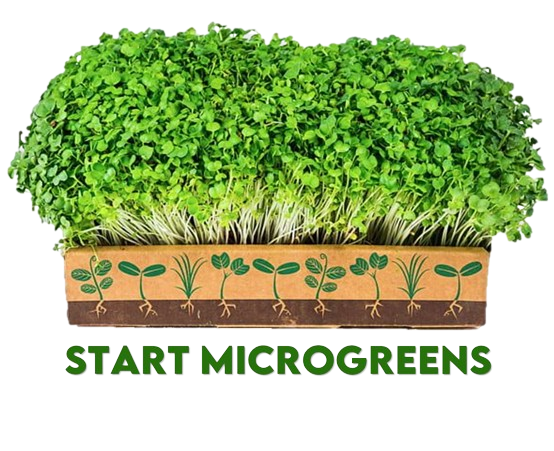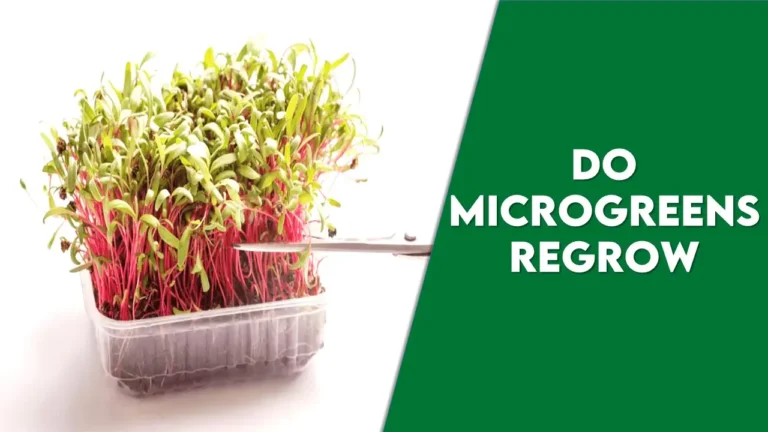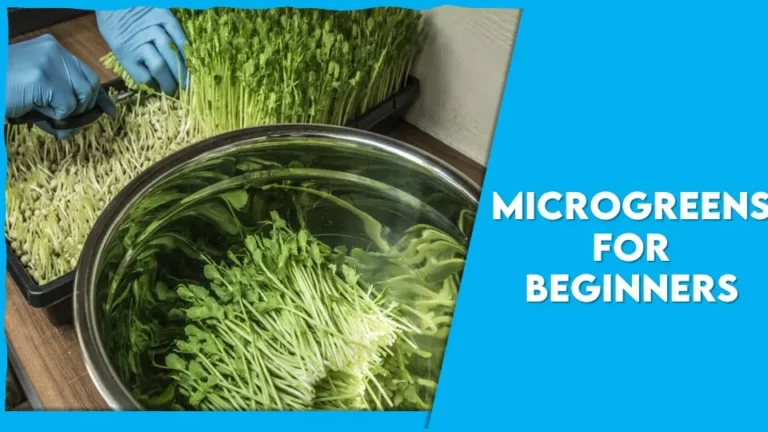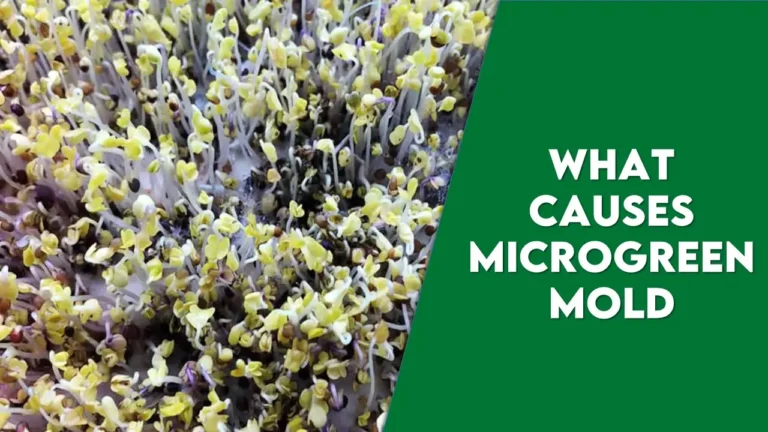Microgreens are young edible plants harvested at an early stage of growth, typically after the first true leaves have developed. Despite their ‘micro’ size, microgreens are considered a superfood in nutritional value. The ease of growing them without being concerned about maintaining them makes them a popular food choice for those eager to take up their nutritional intake while having to do little or no gardening work. They can go well with anything, like adding them to any soup, salad, or sandwich, and others.
Microgreens are the culinary sensation of the modern nutritional era. With its abundant nutritional wealth, microgreens are gaining popularity among people who are conscious about their health and also people who are keen on gardening-related activities. These tiny greens offer a nutritional powerful powerpack and this attribution makes them a prominent choice of addition to various dishes. What according to you are the most popular microgreens? In this article, let us get familiarized with the concept of the most popular microgreens available and what can be the best microgreens to grow.
List of Most Popular Microgreens
Radish Microgreens
Radish microgreens are known for their vibrant appearance. The flavor of radish microgreens is similar to that of matured radish. Radish microgreens contain a very good source of vitamins and minerals covering a range of vivid nutrition. The spicy flavor of radish microgreens makes them prominent. These are best consumed soon after harvesting to maintain freshness and flavor. It is also considered one of the exceptional and most popular microgreens.
Radish Microgreens Benefits
- Radish microgreens are rich in vitamins E, C, and K. It also contains small amounts of Vitamin A and B6
- It helps in collagen production that helps in maintaining good and strong blood vessels
- Radish microgreens aid in weight loss as it is low in calories and carbs hence a good addition to your weight loss journey
- By regular consumption of radish microgreens, healthy blood sugar levels can be maintained.
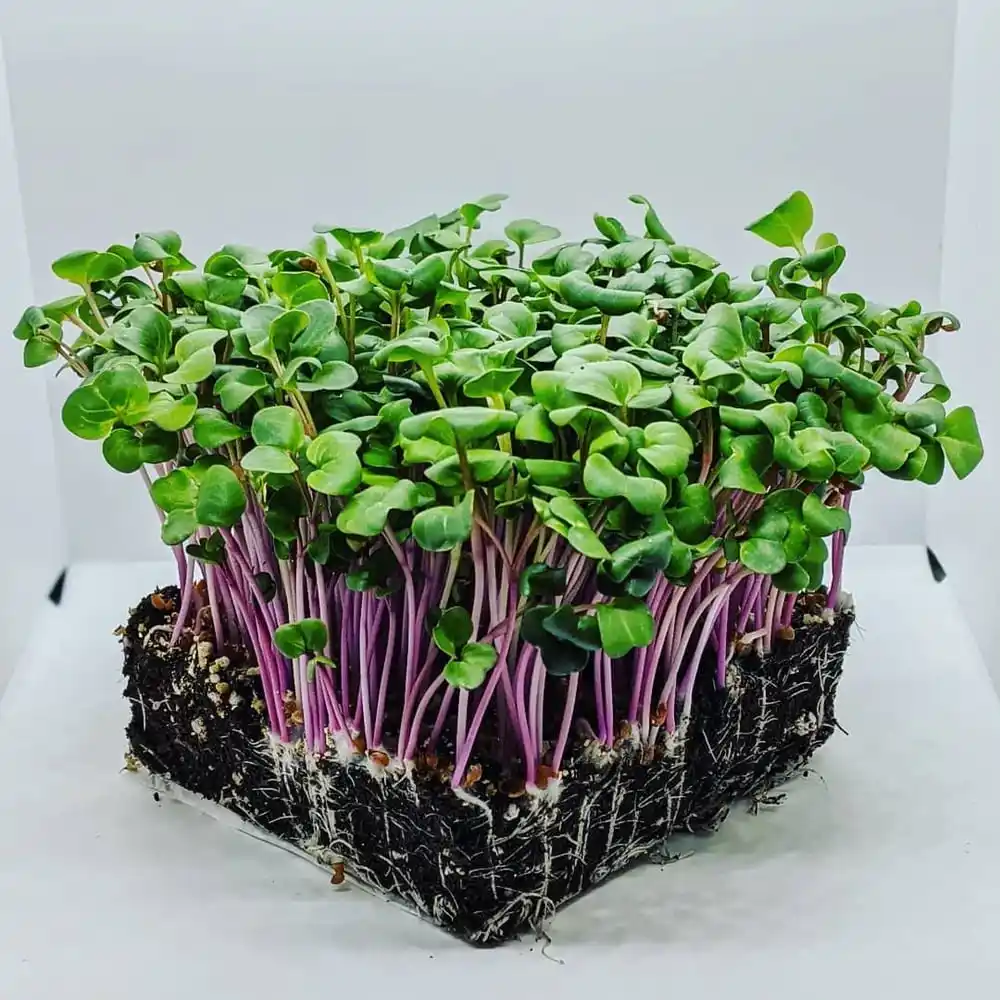
Fenugreek Microgreens
Fenugreek or methi microgreens are the traditional greens available in every household and are among the most popular microgreens. They are prominently known for their texture and slightly bitter flavor. The intensity of the flavor depends on the growing conditions and the type of variety chosen for the cultivation process. They are a good source of Iron and fiber and also contain Vitamin A and Vitamin C. They go well with various types of food which includes soups, curries, toppings sandwiches, and soups.
Fenugreek Microgreens Benefits
- They are a rich source of Iron and fiber and also contain Vitamins like A and C.
- Fenugreek microgreens are pretty much helpful for people suffering from diabetes as they play an important role in regulating blood sugar levels.
- These are also pretty good sources of fiber which aids in healthy digestion. It regulates bowel movements thereby preventing constipation.
- They add a concentrated source of nutrition to your diet without adding many calories and contribute to a healthy diet plan
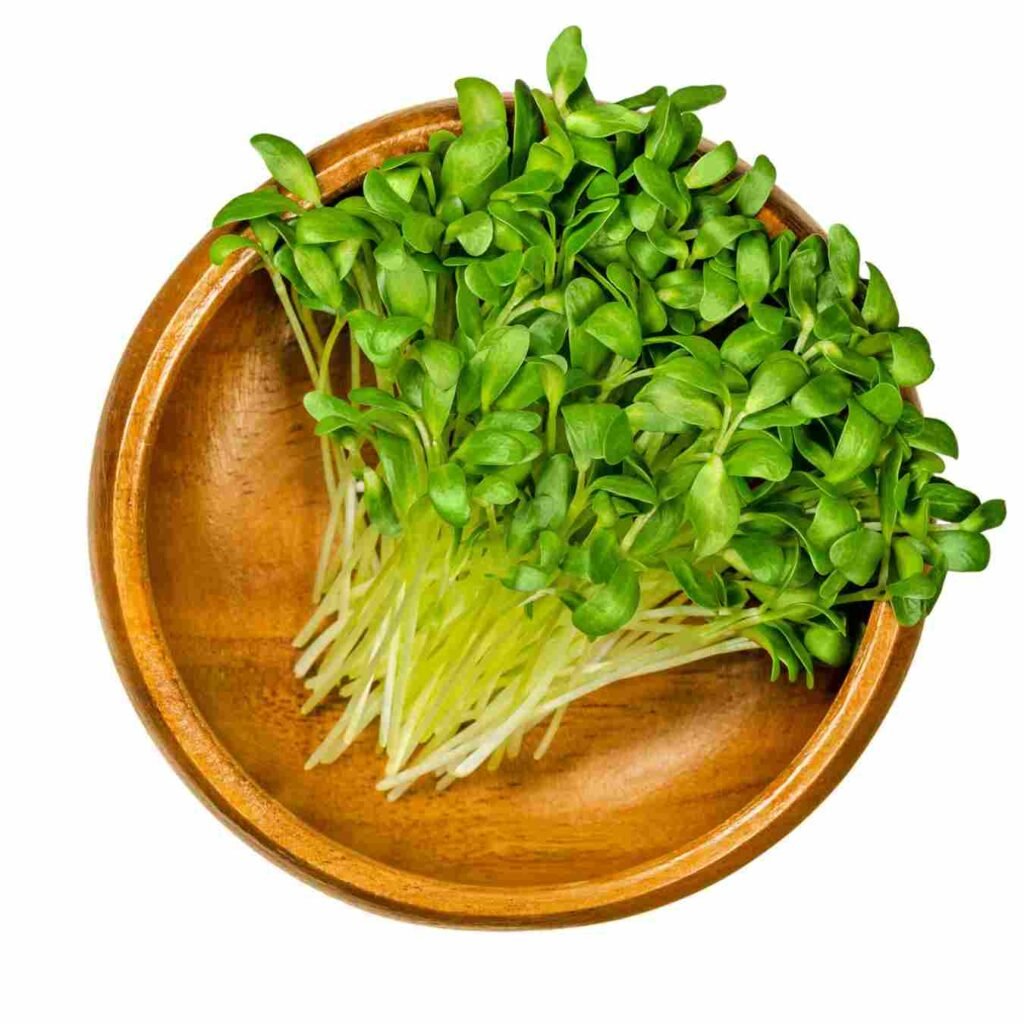
Mustard Microgreens
Mustard microgreens are the tiny, tender shoots of the mustard plant. Why do most people pick mustard microgreens as a great choice in the culinary industry? It is its authentic traditional flavor and texture. The level of spiciness and flavor depends on the variety of mustard chosen. Depending on the variety, they appear to be greenish purple which makes them appealing and one of the most popular microgreens to grow. Their growth process is relatively easy and can be cultivated through different methods. The mustard microgreens are versatile.
Mustard Microgreens Benefits
- Mustard microgreens are rich in vitamins like A, C, E, and K. They are also protein-friendly
- The compounds namely glucosinolates and phenols are found in mustard that will protect the body from distress. The immune system functioning can also be enhanced and improved with this
- These micro greens also play a key role in preventing sinus-related inconveniences and disorders including congestion
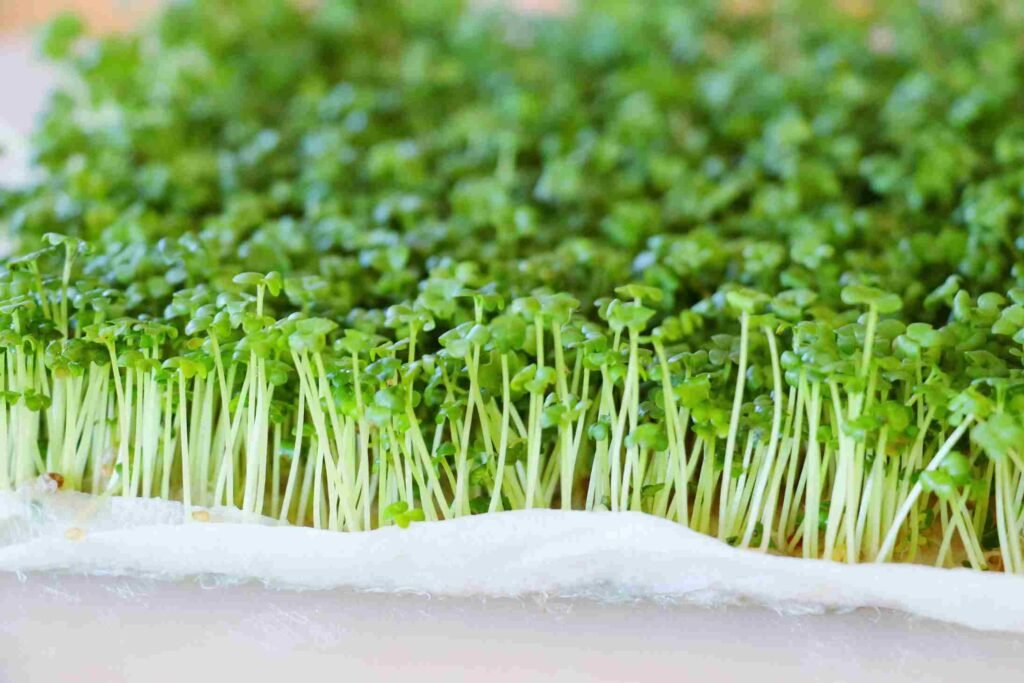
Broccoli Microgreens
Broccoli microgreens are exceptionally known for their nutritional value. The flavor is slightly milder than the mature broccoli but contains good nutritional value than the matured ones. They resemble the taste of mustard microgreens which often have a slight peppery taste. Most home gardeners and beginners prefer a crop that comes to maturity quickly so that it can be harvested early. This is the advantage that broccoli microgreens offer. Numerous health benefits are offered by them when added to your diet. Antioxidants present in broccoli protect the cells from radical damage. A meal can be nutritionally enhanced when broccoli microgreens are added to it.
Broccoli Microgreens Benefits
- Broccoli microgreens are widely known for its cancer fighting properties because of the compound called sulforaphane.
- It helps in reducing oxidative stress
- It is rich in dietary fiber and aids in good digestion
- It is a good addition to include in your diet if planning for weight loss journey
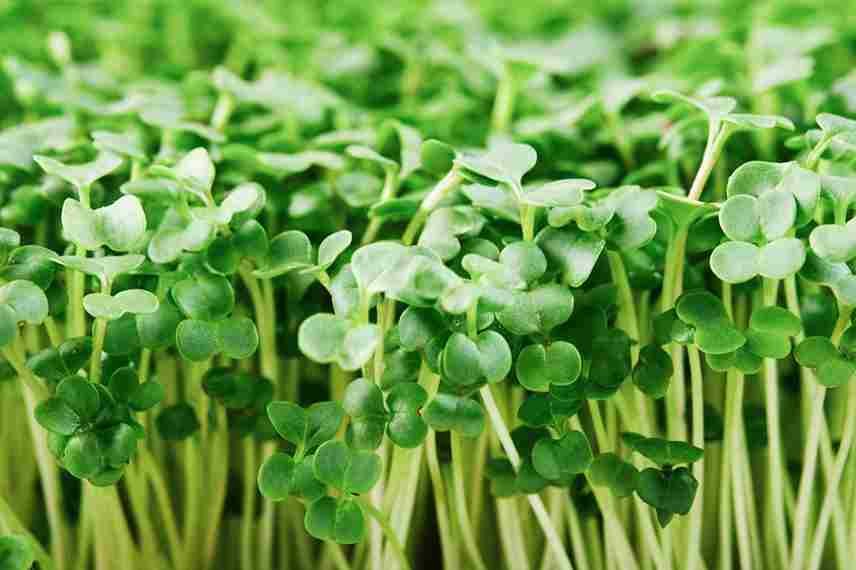
Amaranth Microgreens
Amaranth microgreens being very tiny creatures offer a wide range of benefits. These are simply a pack of nutritional punch that can be easily grown and maintained by anyone and everyone making it accessible to all the people. Their simplicity in cultivation and less requirement of space and time make them an easy choice for starting the cultivation process. Be it a salad or soup or as toppings, amaranth microgreens could go perfectly well. Currently, two varieties are available that includes green and red amaranthus
Amaranth Microgreens Benefits
- Amaranth microgreens are rich in Vitamin K, and Vitamin C. It is an exceptionally great source of Iron
- It contains a good amount of proteins that help in repairing the tissues.
- Amaranth microgreens also aid in the immune system boosting. It also increases and improves the production of red blood cells
- These microgreens are also packed with antioxidants that protect the body from damage caused due to harmful radicals
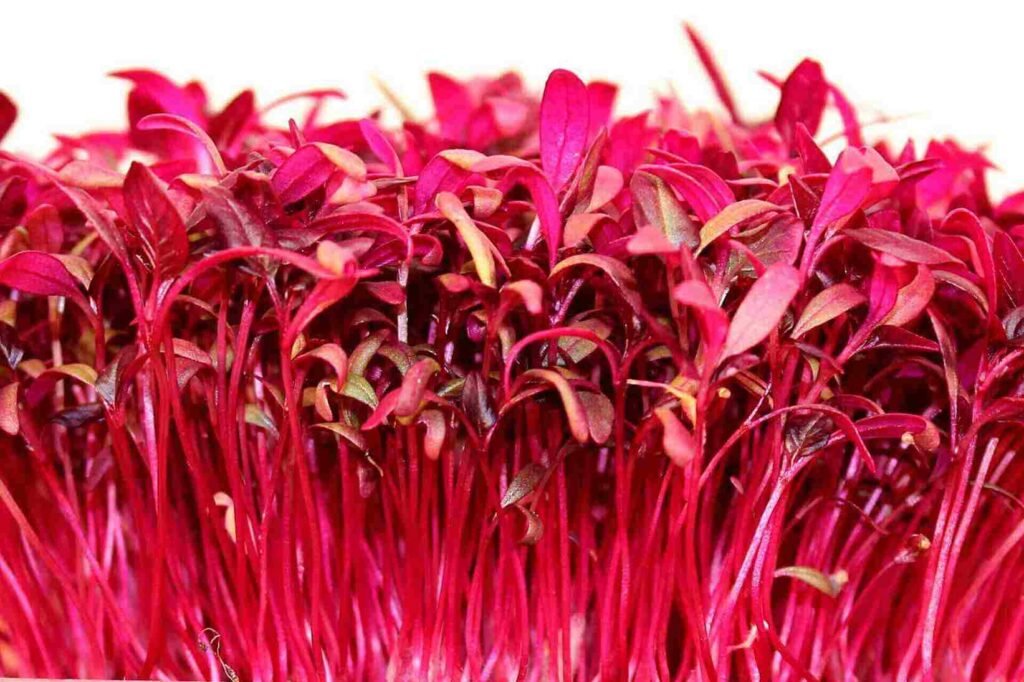
Kale Microgreens
Kale is a leafy vegetable that belongs to the family of Brassicaceae. It falls under the category of exotic leafy greens as it is not native to India and is cultivated hydroponically. Several varieties of kale are available in the market, the most common varieties include Tuscan kale and curry kale. Because of its high nutrition content, kale microgreens are considered to be a superfood. The exclusive fiber content in these microgreens makes them perfect for people facing digestive incompatibility. Kale microgreens can be grown in a wide range of climatic conditions as it is hardy. Kale can be consumed raw or cooked.
Kale Microgreens Benefits
- It aids in good functioning of the liver
- These microgreens are great for improving cardiovascular health
- Kale microgreens help in reducing the inflammations
- They also contain good amounts if Iron

Pea Microgreens
Pea microgreens are versatile and belong to the Fabaceae family. All the varieties of this family contain a good amount of protein. Pea microgreens can also be grown in water. If pea microgreens are left without harvesting till later stages, they develop into pea shoots. To experience the right texture and flavor, it needs to be harvested in the young stage which means in the germination stage which is nothing but the microgreens. Pea microgreens are also known for their phytonutrient content.
Pea Microgreens Benefits
- Pea microgreens are great source of proteins.
- These microgreens are rich in Vitamin A and Vitamin C
- It boosts the collagen production
- Pea microgreens are also rich in Vitamin C which thereby important for bone density
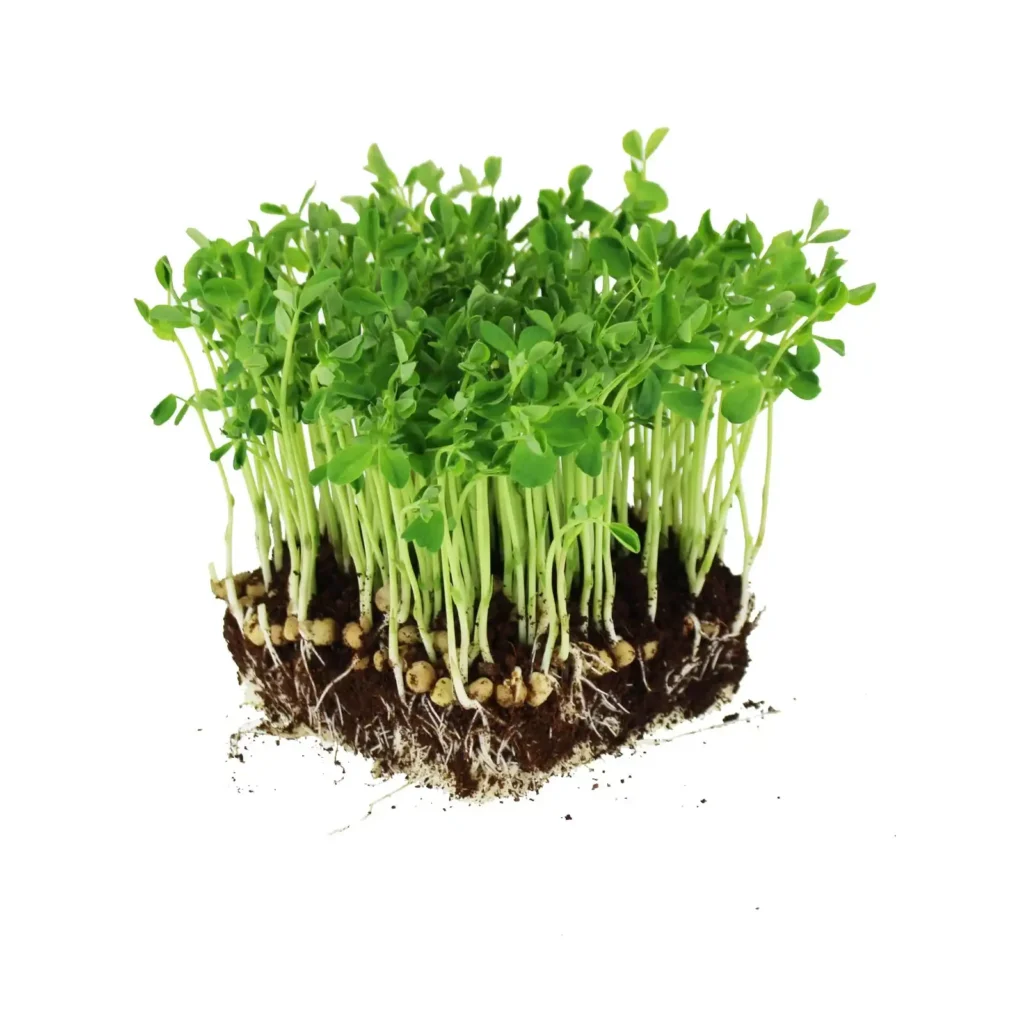
Sunflower Microgreens
Sunflower microgreens will be the most popular microgreens shortly. These have a good nutty and crunchy texture that is preferred by most of the health addicts. Sunflower microgreens are a perfect source of complete protein which means they contain all the essential amino acids. Adding sunflower microgreens is a better nutrition source than having raw sunflower seeds. They have a sweety flavor making it perfect to be eaten raw or added to smoothies or as a base to the salads.
Sunflower Microgreens Benefits
- Sunflower microgreens are a great source of complex proteins which means it can offer all the essential amino acids.
- Sunflower microgreens are also good sources of B complex vitamins apart from Vitamin A and Vitamin K.
- It is beneficial to consume these microgreens instead of sunflower seeds as the microgreens would facilitate easy absorption of Magnesium and Zinc to the body.
- Sunflower microgreens also aid in the proper functioning of hemoglobin. Healthy hair and healthy skin can be maintained by consuming them regularly.
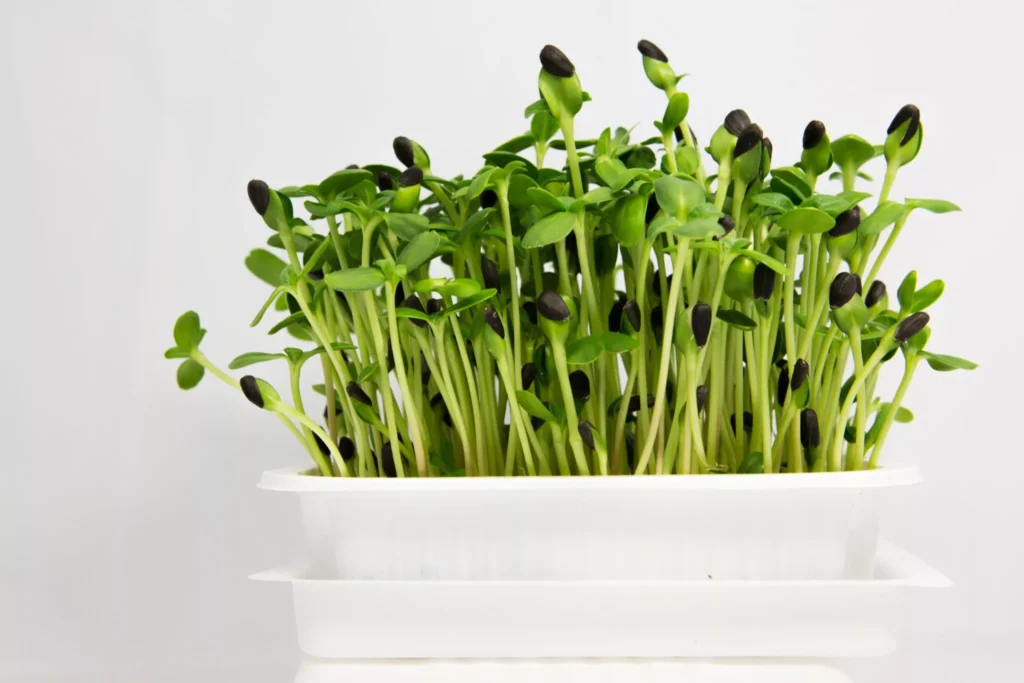
Red beet Microgreens
Beet microgreens have a vibrant red appearance and offer an appealing look. Every inch of beet microgreens tastes good and gives the same taste as the matured ones. Most of the microgreens enlisted in the article look similar but beet microgreens have a distinct appearance that can be easily identified due to the pigment present in them. The harvest of beet microgreens may take a little longer than other microgreens but the harvest is worth it. The ideal harvest time is between ten to twenty-five days.
Red Beet Microgreens Benefits
- Beet microgreens contain good levels of folate which is important for bone health.
- They also contain antioxidants that can elevate the potential benefits of heart health.
- Beet microgreens can also help in improving athletic performance.
- Beet microgreens are a very rich source of micro nutrients and minerals.

Parsley Microgreens
Parsley microgreens are more like mature parsley plants but are harvested in less time at a young age. The parsley microgreens go perfectly with Italian cuisine. The taste of tomato dishes would also be enhanced with the addition of parsley microgreens. The different types of parsley include Italian parsley and flat-leaf parsley. They usually take 21 – 25 days to come to harvest and the seeds are to be soaked to at least four hours to aid in good germination.
Parsley Microgreens Benefits
- Parsley microgreens are rich in Iron and thus aids in hemoglobin production
- They are also rich in folate and fiber, thus improving bone health and digestion respectively.
- These microgreens help in maintaining good bone density and bone health.
- It also supports healthy immune functioning
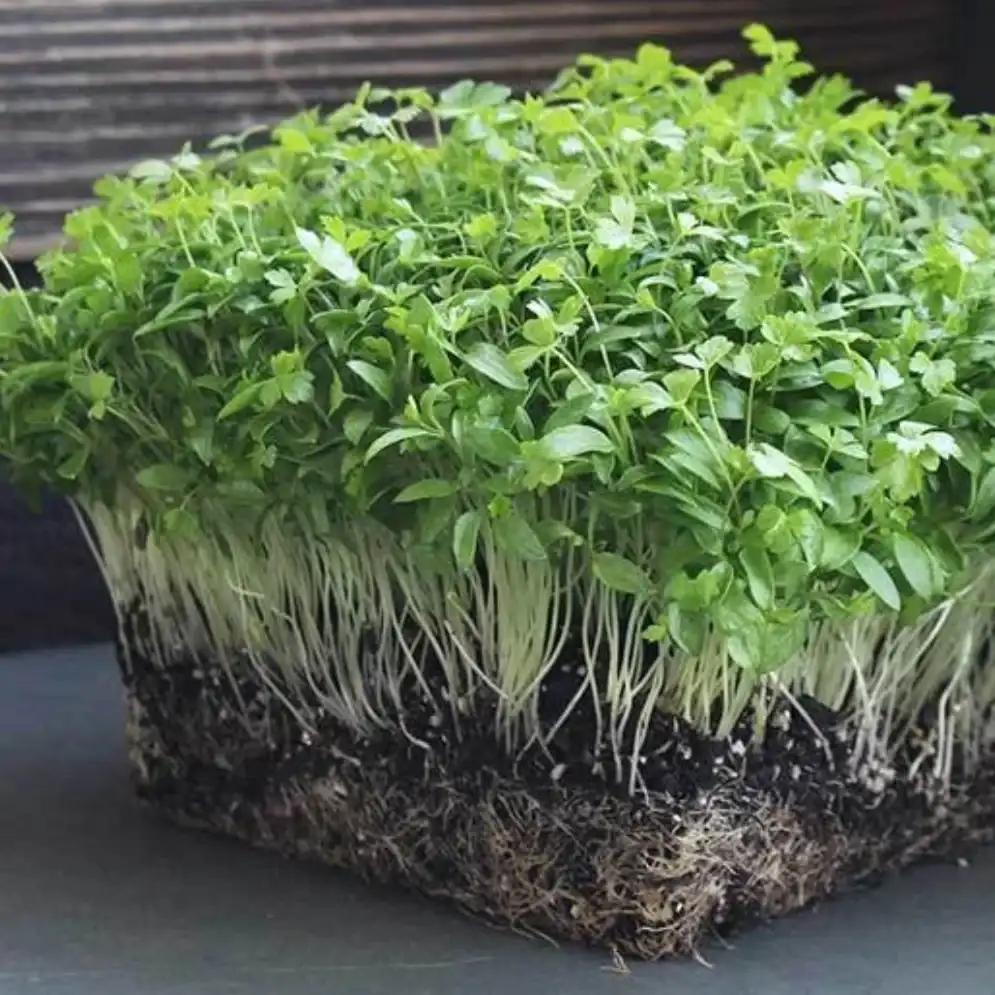
Cilantro Microgreens
Cilantro microgreens are nothing but the Chinese parsley which is commonly known and identified as coriander. The initial growth might be slow but the harvest is pretty rewarding. It has a very sharp flavor and is chosen by many food lovers for its texture and flavor. Adding a few leaves of cilantro microgreens can turn out the dish’s appearance and taste. Cilantro is said to be the first known spice to mankind and also stands out as a popular ingredient throughout.
Cilantro Microgreens Benefits
- Cilantro microgreens are excellent for healthy kidney functioning
- These microgreens help in lowering the blood sugar levels
- It also help in better liver functioning
- It is also rich in Vitamin K that aids in good growth and functioning of bones.
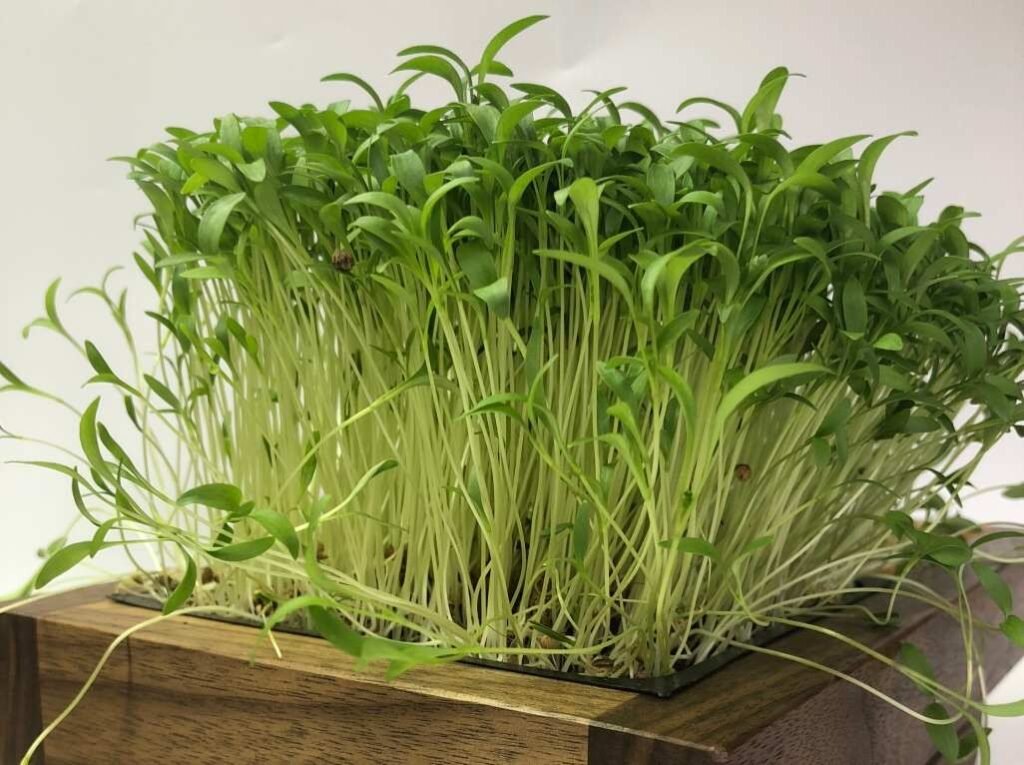
Buk choy Microgreens
Buk choy is popularly known as Chinese cabbage because of its structure similar to a cabbage when fully grown. Buk choy microgreens are Asia’s most popular microgreens that fall under the exotic category. They look similar to the other microgreens but the matured ones can be easily identified by their large and textured leaf size. Buk choy microgreens are also known for their immune-boosting property.
Buk Choy Microgreens Benefits
- Buk choy microgreens contain Selenium that is essential for maintaining thyroid health.
- Buk choy can naturally help with regulation of blood pressure
- It also play an important role in synthesis of collagen in the body
- The selenium in buk choy is also said to contain cancer fighting properties
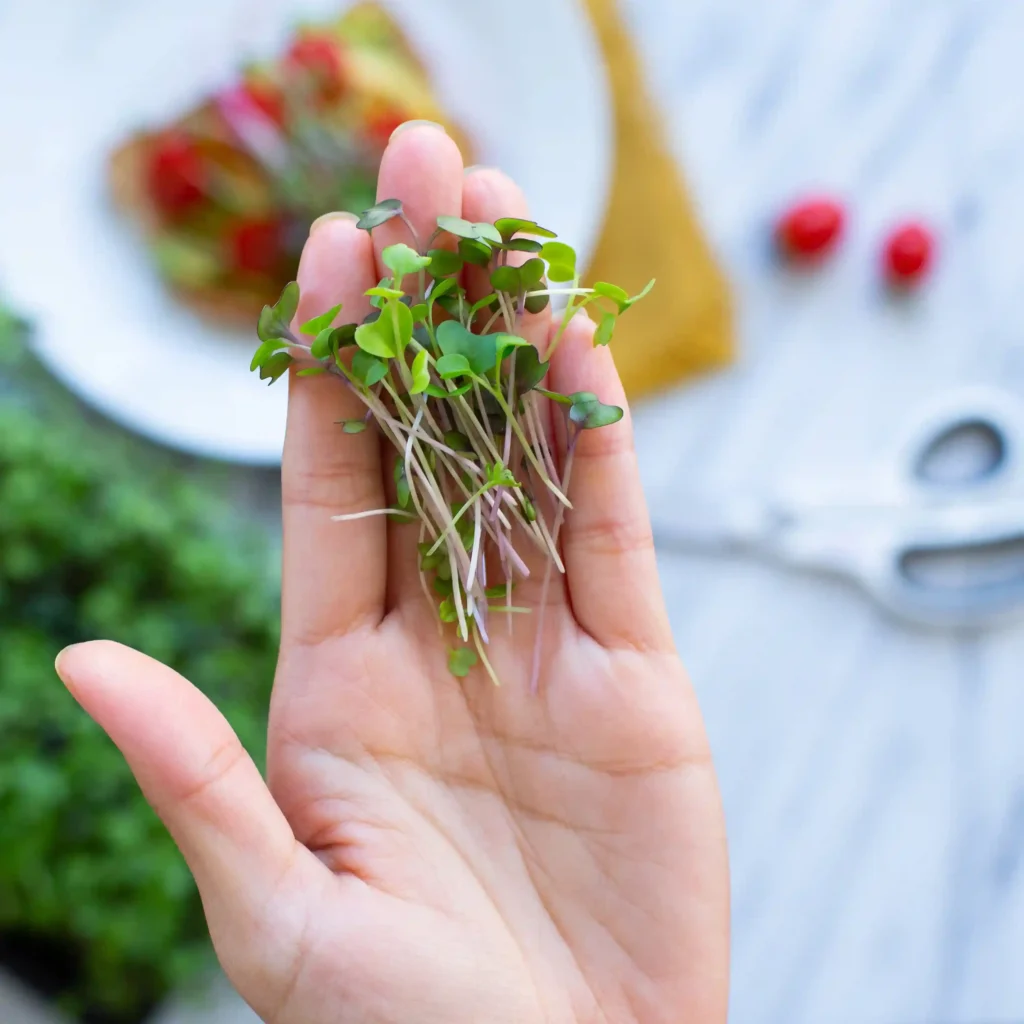
Arugula Microgreens
Arugula microgreens are known for their vibrant green color and delicate leaves. Arugula is the closest relative of vegetables like broccoli and leafy greens like kale all of which belong to the cruciferous family. Arugula greens have a peppery taste. A small quantity of arugula leaves can make up the same level of nutrition as a large quantity of mature arugula leaves. This exhibits the exceptional offering of arugula from a nutritional point of view.
Arugula Microgreens Benefits
- Arugula microgreens can help in improving the cognitive functioning
- It is one among those microgreens which is extremely hydrating
- It can be a great addition to early morning snacking as it detoxifies the body
- They contain wide range of phytonutrients that is essential for overall well being of a person
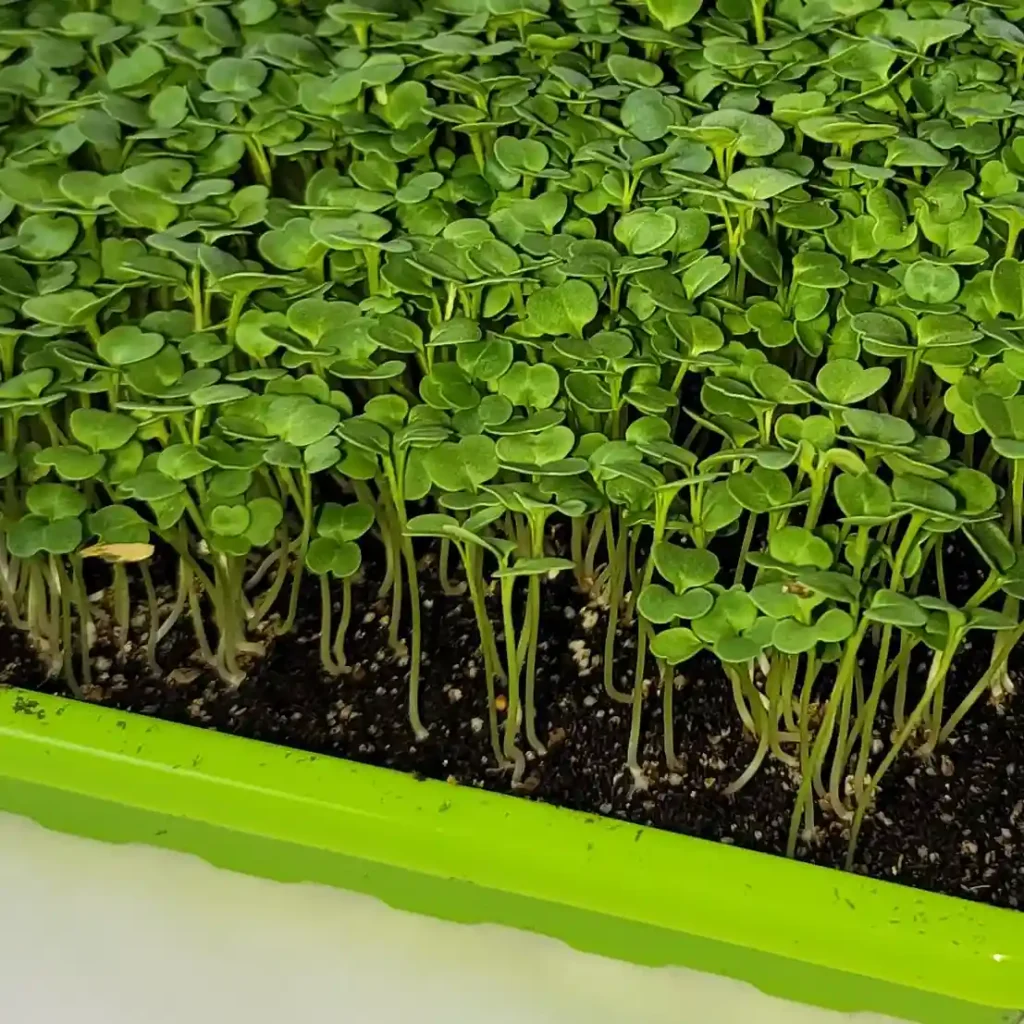
Basil Microgreens
The most popular variety of basil microgreens is the sweet basil. The basil microgreens germinate faster than any other microgreens but take longer time to grow making them fall under the category of slow-growing microgreens. These micro greens often appear more dense and compact than other microgreens.
Basil Microgreens Benefits
- Basil microgreens help in fighting any kind of infections in the body.
- It also boosts collagen production and reduces aging.
- Consumption of a good amount of basil microgreens can help in achieving hormonal balance.
- Proper blood sugar levels can be maintained if consumed on a regular basis.

Chia Microgreens
Chia sprouts are most popularly known by anyone and everyone because of their contribution to health and well-being. Chia microgreens are less commonly known but are gaining popularity in recent times. Chia is well known for its great source of protein and Iron which makes it a great option for people suffering from anaemia. It also contains three times more amount of Calcium than cow’s milk. Cardiovascular health also gets improved with chia microgreens. The task of blood purification also get done through these microgreens.
Chia microgreens Benefits
- Chia microgreens can be consumed when suffering from dengue as it can increase the platelet count.
- It is rich in omega 3 fatty acids.
- These microgreens are good for improving postpartum health.
- It improves the heart health and thereby the blood flow.

Best Microgreens to be Consumed for an Underlying Condition
| CONDITION | BEST TO CONSUME |
| ALZHEIMER’S | Radish |
| ANEMIA | Red beets |
| BLOOD PRESSURE | Radish, Red beets, Broccoli |
| CARDIOVASCULAR SYSTEM | Radish, Red beets, Broccoli |
| DETOXIFY LIVER | Mustard, Broccoli |
| DIABETES | Radish, Mustard, Broccoli |
| DIGESTION & GUT HEALTH | Red beets, Broccoli |
| EYE HEALTH | Red beets, Broccoli |
| CANCER | Red beets, Broccoli, Radish,Peas |
| HAIR, SKIN, NAILS | Radish, Mustard, Broccoli, Red beets |
| IMMUNITY | Red Beet, Broccoli, Peas, Mustard |
| OSTEOPOROSIS | Peas, Broccoli, Red beet |
| SINUS CONGESTION | Mustard |
| THYROID HEALTH | Broccoli |
| WEIGHT LOSS | Radish, Broccoli, Peas, Mustard, Red beets |
| REDUCED INFLAMMATION | Broccoli |
Conclusion:
All the above mentioned microgreens allow us to include them into many cuisines. Each type of microgreens has its own texture, flavor, and nutritional density which makes them a superfood. Many flavors of microgreens are available ranging from sweet-flavored sunflower microgreens to tangy-flavored chia microgreens without compromising the nutritional value. These are not only easy to grow but also enhance the taste of salads, sandwiches, and many other dishes.
Latest Post
- Most Popular Microgreens to Grow

- Filling Trays and growing of Microgreens

- Different Ways to Grow Microgreens at Home

- Different Types of Microgreens and Their Benefits

- Sprouts vs Microgreens

- What Causes Microgreen Mold?

- Disadvantages Of Microgreens ? 3 things you must know
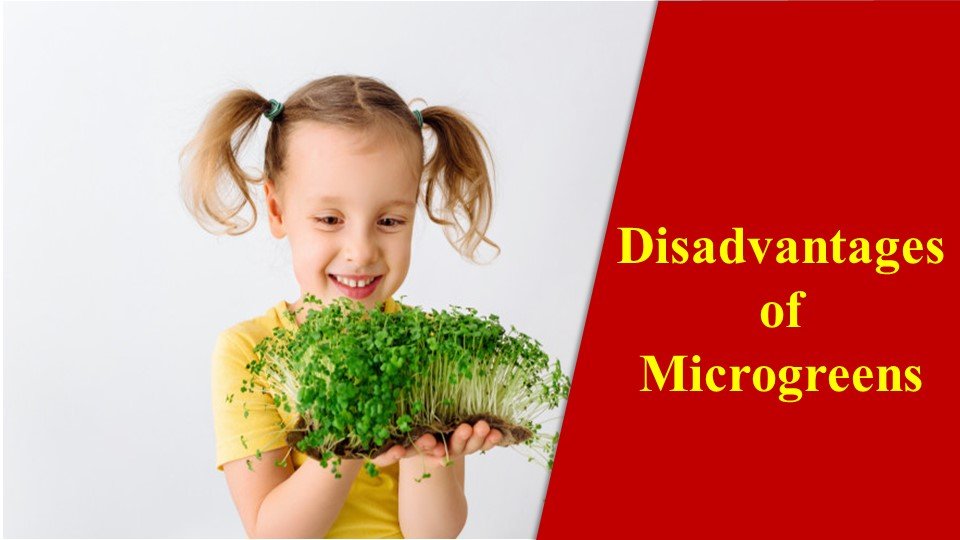
- Get The Ideas On Where To Sell Microgreens: The 6 Best Ways

- How to grow Microgreens without Soil: Easy tips for Gardener

- top 10 Most Profitable Microgreens In The Us
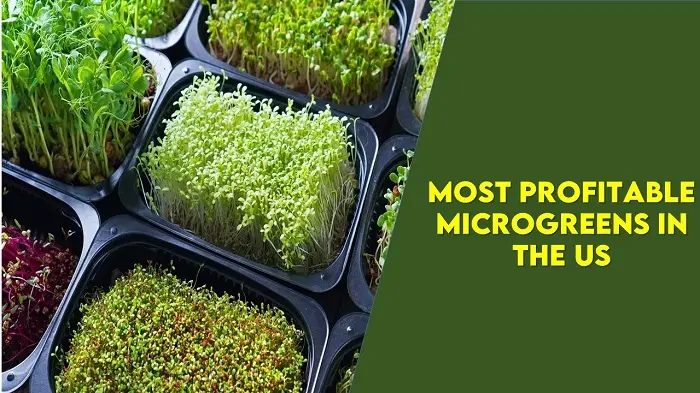
- Do Microgreens Regrow? – Best Ways To Regrow Them
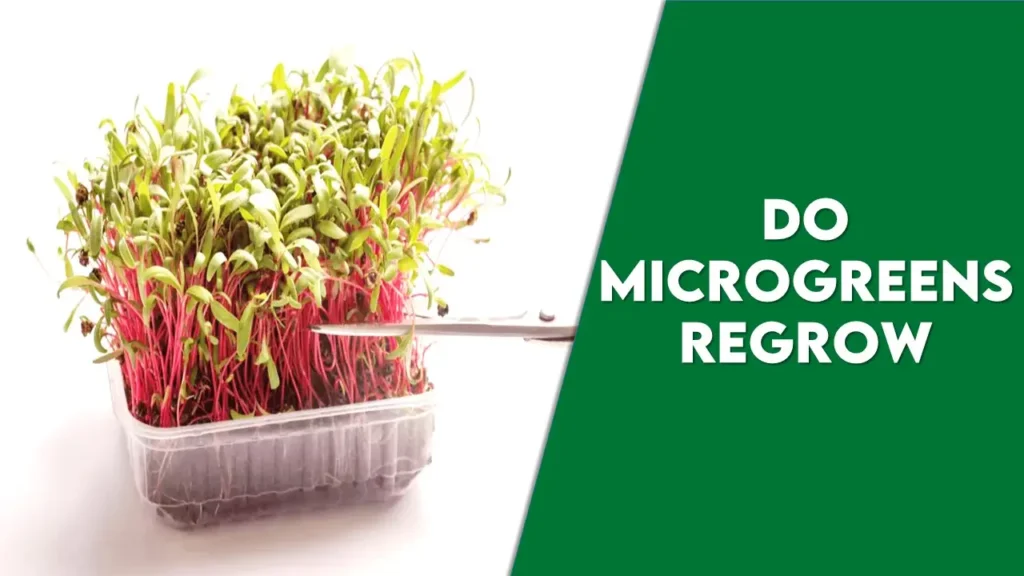
- Who Invented Microgreens ?- Revealing All The Hidden Truths

- 5 Easy Microgreens For Beginners
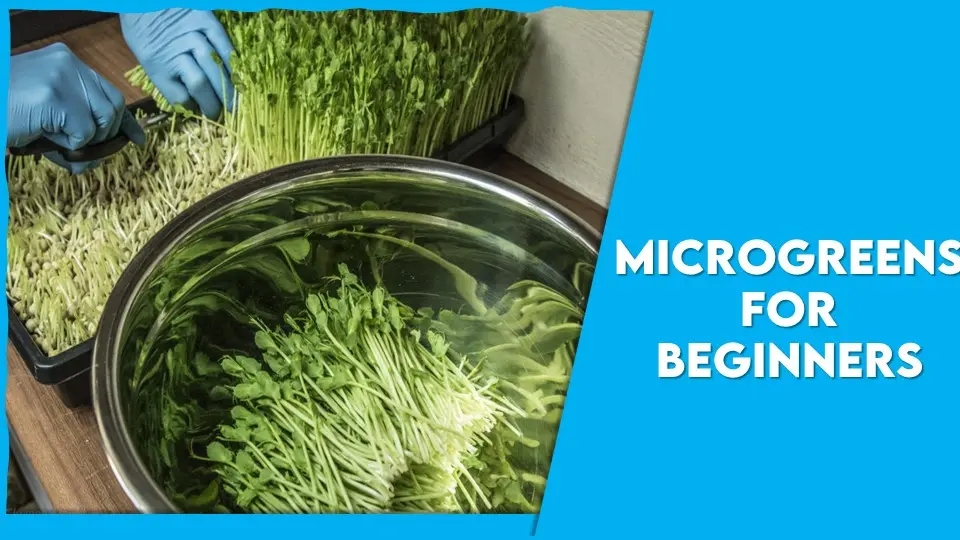
- What Causes Microgreen Mold – A Big Threat To Microgreens
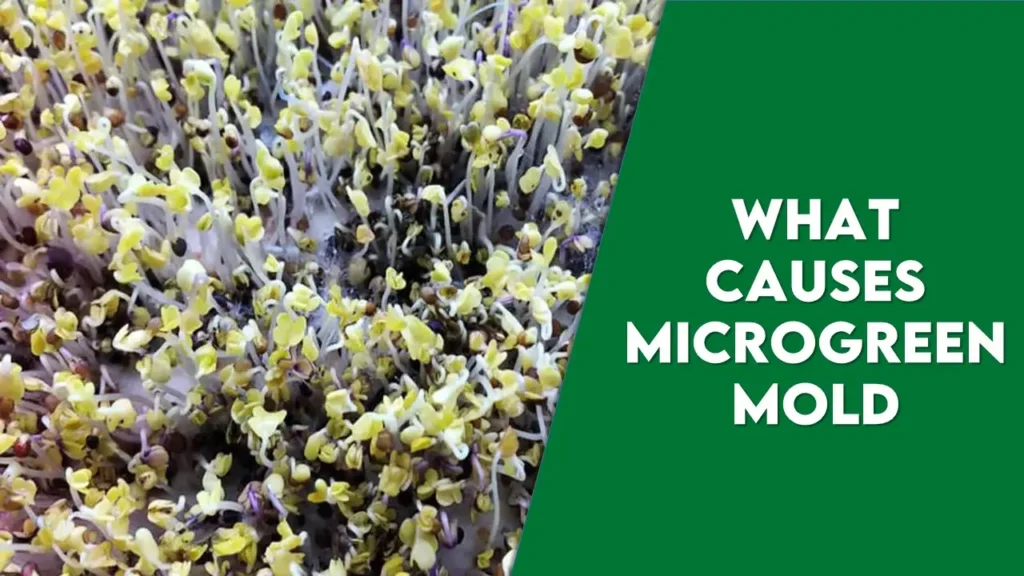
- How To Grow Barley Grass – A Seedling To Amazing Superfood

- Microgreens vs Sprouts – Are They Same? – Let’s uncover the Facts
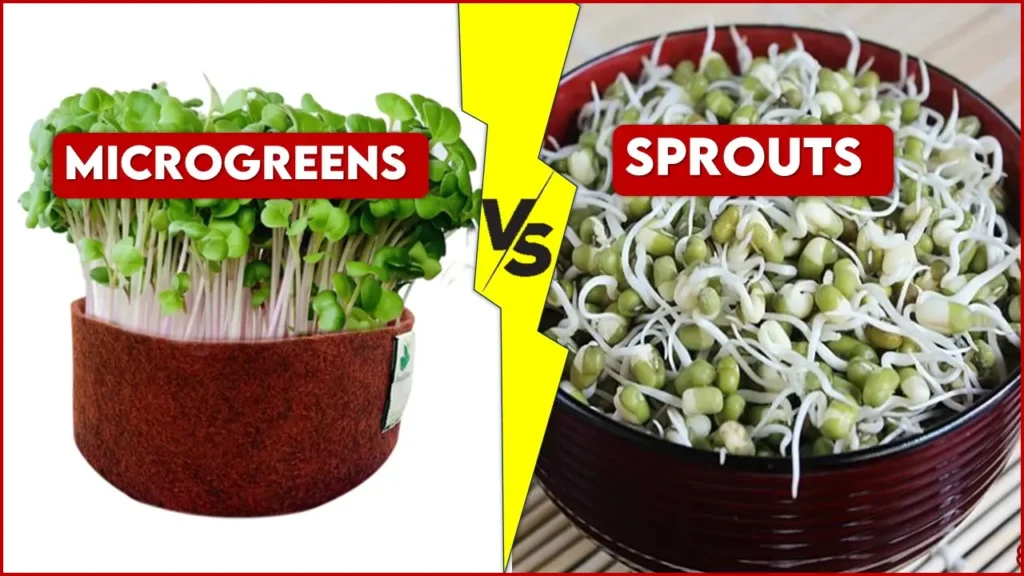
- Do I Need A License To Sell Microgreens – Things To Be Noted

- Microgreens Business – A New Boost To Entrepreneurial Revolution
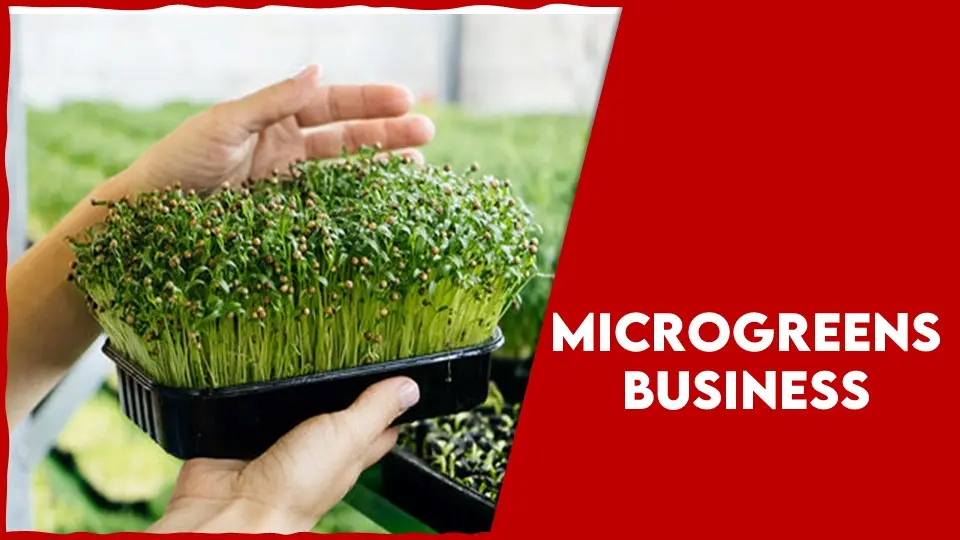
- Where To Buy Wheatgrass – What Would Be The Best

- How to Grow Cilantro Sprouts – The Best Facts One Needs To Know

- How To Sell Microgreens – Best Tips To Follow

